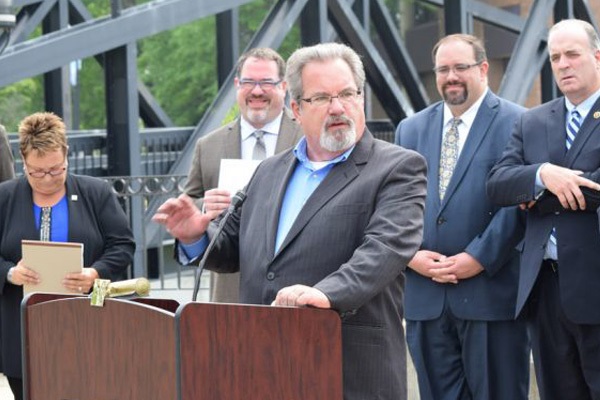While many Michigan’s urban cities’ economic recovery programs have gained momentum, there is concern those efforts may not be moving fast enough or are far enough along.
Visibility is often a problem. Investors, entrepreneurs, community leaders, developers, builders and other critical stakeholders need to “see” incentives, in order to “seize” them, according to development experts like Detroit LISC’s Executive Director Tahirah Ziegler.
That’s the aim behind “Opportunity Zones (OZ).” Created by the 2017 Tax Cuts and Jobs Act, they are a means to help bridge the gap between communities in need of investment and investors in need of fertile new investment opportunities.
Although OZs are considered a viable catalyst among a number of industry experts, they have not been as visible as they could be, according to Ziegler, who believes that investors seeking to make a social impact may benefit by increased knowledge of opportunities within the zones.

To help solve that problem, the Michigan State Housing Development Authority and Michigan Economic Development Corporation launched a new website called miopportunityzones.com. It is aimed at making it easier for interested investors to incubate high-yield investments in cities like Flint, Detroit and Kalamazoo and in surrounding counties, including Genesee, Wayne and Kalamazoo County.
There are 288 Opportunity Zones census tracts in Michigan, with 23 percent of those existing in rural areas.
The newly-minted website provides ready access regarding Redevelopment Ready Sites located in Certified Redevelopment Ready Communities and related development opportunities.

“Thriving businesses are the backbone of local communities and it is critical that we provide businesses and developers across the state with the tools they need to continue to invest in and help build vibrant communities,” says Gov. Gretchen Whitmer. “The more we can educate business owners and community leaders on Opportunity Zones and the benefits of investing in these areas, the more we’re helping our businesses and our people flourish. This website is an exciting resource to help with that mission.”
The new economic development tool is designed to incentivize patient capital investments in low-income communities that have been cut off from capital and experienced a lack of business growth. The program offers capital gains tax relief for those who invest in these challenged areas. The money is focused on projects that will increase employment or residential density.
OZs are intended for high-risk investors who can wait for seven years to see a potential return. It’s called patient equity.
“We are very excited about Opportunity Zones,” says Ziegler. “This (OZ) program provides another tool to spur housing and economic development in targeted census tracks typically devoid of investment interest.
“And, equally critical, the Zones create unprecedented and unique opportunities for communities to promote their projects among a group of engaged investors,” says Ziegler, who believes “everyone” will benefit by the new website and the elevated exposure it brings.

The website even features a community toolkit of resources and communication tips to jump-start the process.
There are three types of tax incentives that relate to the treatment of capital gains, according to the website. Each incentive is tied to the longevity of an investor’s stake in a qualified Opportunity Fund. The greatest incentives are reserved for investments held for 10 years or more.”
Business Facilities recently ranked Michigan in the top 10 states in the nation for Opportunity Zones. MSHDA is partnering with MEDC to build on this success and lead education and resource planning for Michigan Opportunity Zones, including working with local municipalities across the state to help them market their OZ to attract new development activities.

“At MSHDA, we’re advancing the conversation around Opportunity Zones and offering decision-makers across the state knowledge, tools and resources to take advantage of what they have to offer,” says Gary Heidel, acting executive director of MSHDA.
“Questions continue to come in about what Opportunity Zones are and how business owners and community leaders can take advantage of them. This website will answer those questions and more as a one-stop, comprehensive resource aimed at giving interested parties information they can use to engage in our Opportunity Zones,” he says.
The gain from sales of appreciated assets, such as works of art or antiques, can also be reinvested into a Qualified Opportunity Fund. Depending on how long the investment is held tax benefits accrue in five, seven or 10 years. Reinvesting deferred gains on art sales can help grow local Michigan communities.

“Michigan’s communities, particularly our Redevelopment Ready Communities, are well poised to take advantage of Opportunity Zones investment to provide more opportunities for growth and development across the state,” says Jeff Mason, CEO of MEDC.
“Working together with our partners at MSHDA and other state agencies, we are working to make more businesses and developers aware of the benefits of investing in our Opportunity Zones, and this new website will be an important resource in helping to tell that story.”
In total, more than 8,760 qualified Opportunity Zones exist across the U.S., its territories and Washington, D.C.
Editor’s Note:Information about Redevelopment Ready Sites located in Certified Redevelopment Ready Communities can be found at miplace.org/redevelopment-ready-sites. Developers can also access available business development sites in Opportunity Zones at michiganbusiness.org.
See TheHUB’s M. Lapham’s original report entitled Opportunity Zones investments may breathe new life into low-income communities in Detroit


